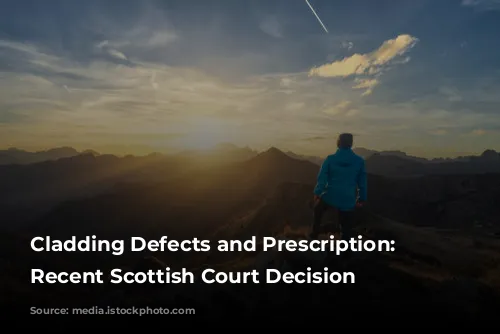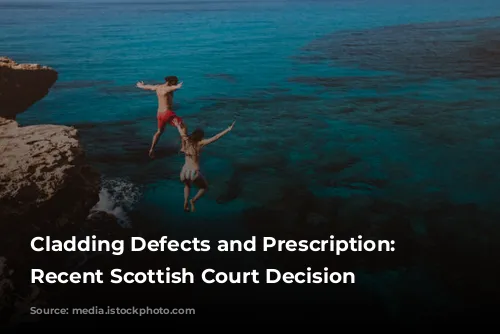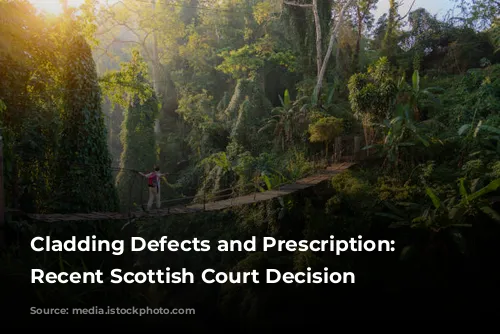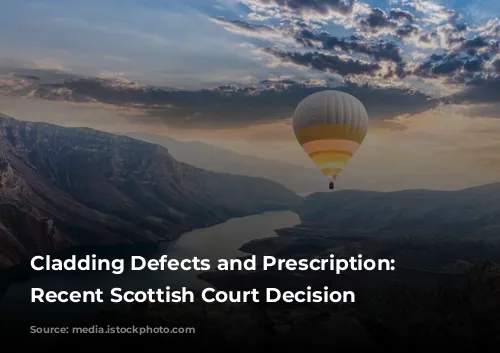This blog explores the recent Outer House decision in Leonardo Hotel Management (UK) Ltd v Galliford Try Building 2014 Ltd [2024] CSOH 43. This case tackles defective cladding, collateral warranties, and the tricky subject of prescription under the Prescription and Limitation (Scotland) Act 1973 (the “1973 Act”).
The 1973 Act sets the time limits for bringing claims against others. This case delves into how these limits might apply to specific situations.

Defective Cladding and Collateral Warranties: A Detailed Look
The Leonardo Inn Hotel in Aberdeen has been at the center of this case, with alleged cladding defects causing a legal battle. The design and build contractors, Galliford Try, and the architect, Building Design Partnership, were employed by the property’s owner.
Galliford Try and the architect provided collateral warranties to Leonardo, promising the hotel management company that they had fulfilled their contractual duties. These warranties were signed in July 2008.
Leonardo entered a lease agreement with the owner in December 2009. The lease included a clause requiring Leonardo to keep the property in good condition, free from defects.
In 2017, following the Grenfell Tower fire, the property owner commissioned a survey. The results, shared with Leonardo in September 2020, revealed potential cladding defects.
This discovery prompted Leonardo to pursue legal action in February 2021, claiming the cladding system was faulty and seeking compensation for repair costs.

Time Limits and Legal Arguments
Galliford Try and the architect argued that Leonardo’s claim was time-barred, meaning it was too late to file a lawsuit. They claimed that the claim stemmed from a breach of the collateral warranty, and Scottish law mandates that such claims must be filed within five years of the loss occurring.
They contended that the loss happened when Leonardo entered the lease in 2009, making the action filed in 2021 twelve years too late.

Saving Provisions and Evidence
The case then focused on the saving provisions of the 1973 Act. These provisions allow for exceptions to the strict time limits, providing a path for claims that might otherwise be considered time-barred.
Lord Richardson, the presiding judge, acknowledged that the claim seemed to have passed the five-year deadline. However, he allowed the case to proceed to an evidential hearing. This meant Leonardo had the opportunity to prove that their situation met the criteria of the saving provisions.
The saving provisions require demonstrating that the claimant was unaware of the defect or could not have reasonably known about it, or that the defendants’ actions led the claimant to believe there were no defects.

Satisfying the Legal Requirements
Leonardo successfully argued that they fulfilled the requirements of the saving provisions. They demonstrated that they lacked the necessary knowledge of the defect, as they only discovered it after the 2017 survey.
Lord Richardson agreed with Leonardo and ruled that the collateral warranties granted by the defendants contained statements that induced Leonardo to believe the property was free from defects.
He also dismissed the defendants’ argument that the warranties only covered defects that arose before July 2008, stating that Leonardo was entitled to rely on the warranties’ assurances regarding the work done and any future work.

Looking Ahead: Developing Law and Future Implications
The Leonardo decision provides valuable guidance on the saving provisions under the 1973 Act. It emphasizes that the application of these provisions is fact-specific, and the law continues to evolve.
It’s important to remember that new legislation impacting prescription came into effect in June 2022. The courts are still providing guidance on this new legislation, and its impact on future cases remains to be seen.
This case will continue with an evidential hearing. The outcome will further clarify the interpretation of the 1973 Act and shape the future of similar claims. We’ll be following this case closely and reporting on its implications.









